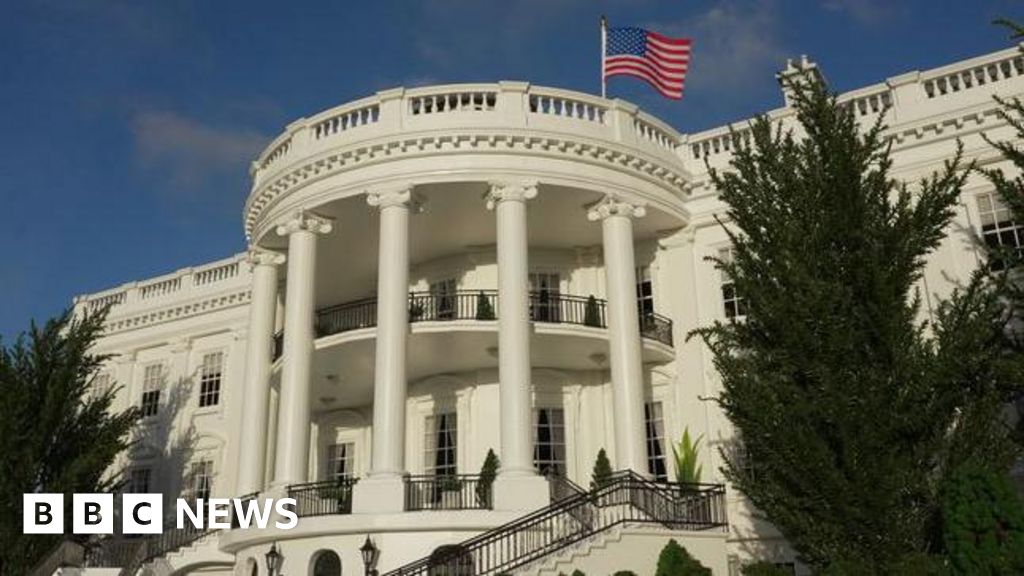Senate Republicans Release 70-Page Budget Resolution. Here’s What It Includes
WASHINGTON—Senate Republicans on April 2 released a 70-page budget resolution intended as a compromise between the upper and lower chambers.
The resolution comes as the House and Senate continue to work toward the passage of President Donald Trump’s agenda through a single reconciliation package. To move forward with the process, both the House and the Senate need to agree to an identical budget resolution.
The resolution follows weeks of negotiations between the two chambers, but there are already signs of division that could pose hurdles to moving forward with the package.
Trump’s Tax Cuts Made Permanent
The centerpiece of the proposal is making permanent the tax cuts passed as part of the 2017 Tax Cuts and Jobs Act, which was a key demand in the Senate from the beginning.
To do this, Graham said, current policy would be used as the baseline to calculate the bill’s long-term impact on the deficit.
Graham said that under the Congressional Budget Act, he has the authority to unilaterally use current policy as the baseline, without the input of the Senate parliamentarian.
“This will allow the tax cuts to be permanent—which will tremendously boost the economy,” Graham said.
This move is geared to keep the resolution in compliance with the Byrd Rule, which requires that any provision that will impact the budget beyond 10 years be made temporary.
Graham and Republicans say that using the current policy baseline will ensure no long-term financial impact from the tax cuts, thus allowing them to be made permanent.
Funding, Spending Cuts
The resolution proposes funding levels for various areas of the federal government, while also calling for spending cuts in others.
Some differences are still permitted during this phase of the process, as this would give the House and the Senate flexibility in proposing drafts of reconciliation bills. Ultimately, an identical one would need to pass both chambers to get to Trump’s desk.
The measure calls for the House to allocate $100 billion for defense and calls on the Senate to allocate $150 billion for the same purpose.
The resolution instructs the House to allocate $90 billion toward homeland security, which would include the border, while it calls for the Senate to put up $175 billion for the same purpose. The final reconciliation bill is expected to include several border security measures.
Medicaid
The resolution leaves intact an earlier call for the House Committee on Energy and Commerce to find $880 billion in cuts, which would necessitate cuts to Medicaid.
This issue has been the central rallying point that lawmakers from the Democratic Party have taken against the legislation. Cuts to any of the major entitlement programs, including Medicaid, Medicare, and Social Security, often carry steep political costs.
Achieving the goal of $880 billion in cuts would all but necessitate at least $500 billion in cuts to Medicaid.
Debt Ceiling
The resolution also has different instructions for the House and Senate regarding the debt ceiling.
Currently, the Treasury is relying on extraordinary measures to keep the government operating. The United States technically reached the debt ceiling in January. These measures are expected to keep the government funded until sometime in the summer, but Congress will need to act to prevent a default.
Warning Signs
There are already some warning signs for the Senate proposal.
Debt ceiling raises have historically been unpopular with many Republicans. For several Republican lawmakers in both chambers, $5 trillion may be too much.
In a written statement to The Epoch Times, Rep. Ralph Norman (R-S.C.) said that this provision will also be a red line for members of the powerful House Freedom Caucus, of which Norman is a member.
He wrote in all caps that the Senate plan was “dead on arrival” in the House.
“The 5 trillion is one part of the overall bill which I will not support nor will members of our Freedom Caucus support!” Norman said.
Republicans can spare only three defections in both chambers of Congress to move forward with the Senate’s compromise proposal.
If the GOP leadership can’t garner enough votes to move ahead, further negotiations between the two chambers will be necessary.















